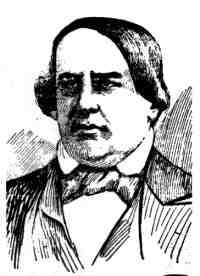
| ||
| CURRENT ISSUE | BACK ISSUES | ABOUT THE VOICE | ABOUT THE NEIGHBORHOOD | ||
| CLASS ADS | DISPLAY ADS | FEEDBACK | ||

| ||
| CURRENT ISSUE | BACK ISSUES | ABOUT THE VOICE | ABOUT THE NEIGHBORHOOD | ||
| CLASS ADS | DISPLAY ADS | FEEDBACK | ||
Noe Valley is the home of realtor Harry Aleo, a staunch Republican who still displays "Ike" and Reagan memorabilia in his storefront window. It is also the home of Mark Leno, a gay San Francisco supervisor who fought for and won health coverage for sex-change operations. In the late 1970s, the "orange people," followers of Indian guru Rajneesh, set up a meditation center here. In 1982, Mother Teresa established her only U.S. novitiate at St. Paul's on Church Street. During the early '90s, that same Catholic Church was transformed by Walt Disney Pictures for the filming of Sister Act, starring Whoopi Goldberg. In the late '90s, Don Johnson's Nash Bridges shot a series of episodes in and around a Noe Valley Victorian.
The neighborhood has its share of panhandlers who've bedded down in a doorway and techies who park their electric cars on the sidewalk. We also have large contingents of dot-com'ers, manicurists, aromatherapists, yogis, AIDS activists, lawyers, doctors, writers, filmmakers, pet sitters, and new moms. (Twenty-fourth Street, our main drag, is infamous for its stroller -- and dog -- gridlock.)
Nestled on the eastern slopes of Twin Peaks and surrounded on three sides by hills, Noe Valley has the feel of a small town within a big city. "Downtown Noe Valley" is a concentration of businesses along a five-block stretch of 24th Street, but most locals extend the boundaries of greater Noe Valley to Grand View, 21st, Dolores, and 30th streets.

|
The
neighborhood owes its name to Jose de Jesus Noe (1805-1862), one of the last Mexican
alcaldes (mayors) of Yerba Buena. Upon the American takeover of Yerba Buena
(then renamed San Francisco) in 1846, Noe received a 4,443-acre land grant that
encompassed a sixth of present-day San Francisco, including present-day Noe
Valley, the Castro, Glen Park, Diamond Heights, West Portal, and several other
city neighborhoods. In the 1850s, vegetable farms and cattle and sheep ranches dotted the valley floor. Noe reportedly presided over his vast cattle spread, called Rancho San Miguel, from a Grand View homestead he built for $30,000 (a considerable sum in those days). Over the next 100 years, boosted by the extension of the Castro Street cable-car line to 26th Street in 1887, the sparsely populated pastureland called "Horner's Addition" gave way to rows of two-story Victorians, the homes of native Californians and working-class immigrants of Irish, German, Italian, Russian, and Scandinavian descent. As the carpenters, tailors, bakers, firefighters, teachers, and longshoremen moved in, the community renamed itself Noe Valley. sketch by E. A. Burbank, provided courtesy of the Noe family |
In the years since -- with the help of countless volunteers and freelance contributors, and our many loyal advertisers -- the newspaper has expanded to an average of 44 pages. We started using full color on at least 8 of those pages in May, 2010. Published 10 to 12 months a year, it continues to chronicle the events, personalities, and institutions that make Noe Valley unique.